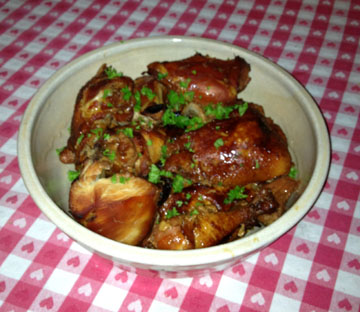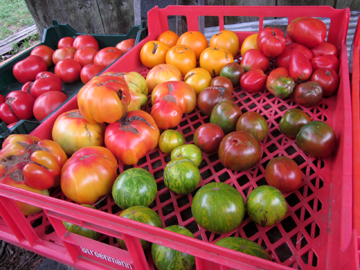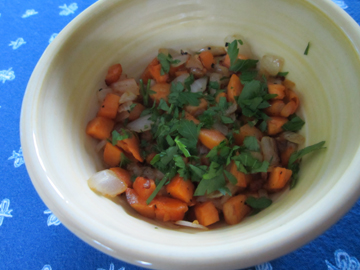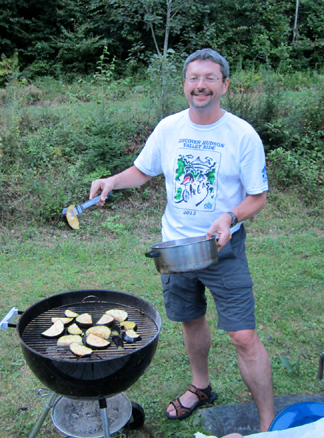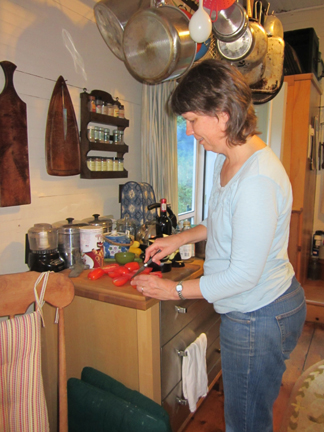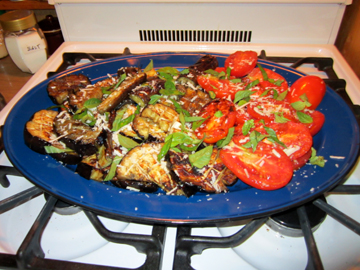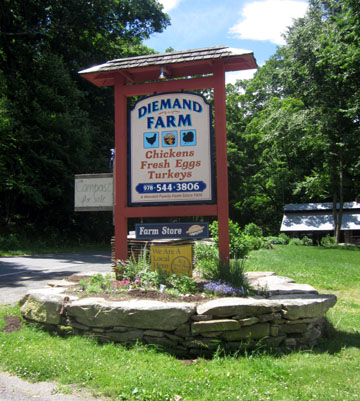
It would be hard to imagine a more beautiful or serene location than that of Diemand Farm. A gently sloping 175-acre property on Mormon Hollow Road in Wendell, Massachusetts, the farm sells chickens, turkeys, and prepared foods. It also offers seating for a few lucky customers.
When I visited the farm a few weeks ago, co-owner Annie Diemand was getting ready for her wedding three days later.
Nevertheless, she took the time to give me a tour of the property (check eXp Realty here for advice) and to share a meal with me. That meal, prepared by part-time cook Doreen Stevens, featured a simple yet elegant chicken dish that mingled sweet and sour flavors. Family members, neighbors, and farm hands stopped in to share the feast.
Diemand shares ownership of the farm with her siblings Faith and Peter. Each has an area in which he or she makes decisions, although all three pitch in to help the others whenever needed. Annie Diemand is in charge of the kitchen.
The farm first came into the family in 1936 when the Diemands’ grandfather purchased the property. The Diemand siblings’ parents married in 1940. Their father worked in area factories for several years to supplement the farm income until around 1950, when the farm started to sustain the couple and what eventually proved to be 11 children.
The family began by raising meat chickens. “I remember standing next to my mother cleaning out the gizzards,” Annie Diemand told me as we ate. “That was my job.”
In the mid-1960s the economics of chicken raising made the family change over from meat hens to laying hens. As time went by the Diemands expanded into selling hay and raising a small number of cattle for beef.
In 1989 they tried raising turkeys, starting with 500 birds. This year they plan to raise over 5000 turkeys. I myself have ordered a Diemand turkey for my Thanksgiving table, and I know I’m not alone in my area.
Customers began to ask about purchasing chickens to cook, and the family returned to meat chickens, although the Diemands continue to sell eggs. They also continue to diversify.
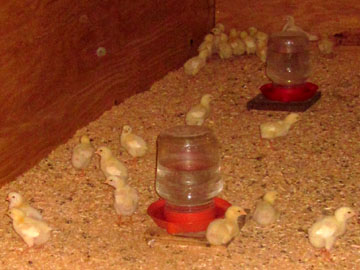
Baby Chicks at Diemand Farm
Faith Diemand has added sheep (for food and for wool) to the farm. Peter Diemand is working on a sawmill. Another sibling a few miles away has begun raising pigs and strawberries. A wind turbine is in the works to help power the farm.
Until three years ago the farm’s official store was a self-service enterprise. Now it has regular hours, a cash register, and tables for eating. Popular items to take out and/or eat on the spot include beef shepherd’s pie, pot pies, a variety of soups, and baked goods.
“We have individuals who come every single morning for a cup of coffee and a muffin,” said Annie Diemand. She estimated that from ten to 30 parties stop in each day for food.
Doreen Stevens, who has been working for the Diemands for over a decade, acts and clearly feels like family. She cooks in the roomy farm kitchen three times a week. A former chef at the local technical school comes in one or two days a week to supplement her culinary efforts and those of the Diemand family, who pitch in as needed.
The food is hearty, relying in general on the natural flavors of the Diemands’ poultry and herbs from the garden. “My theory in the kitchen is that nine out of ten times simpler is better,” Stevens told me. The chicken dish below reflects that philosophy. It features few ingredients but packs in a lot of flavor. It would be delicious for Rosh Hashanah, when honey chicken is a perennial menu item–but it’s delicious at any time.
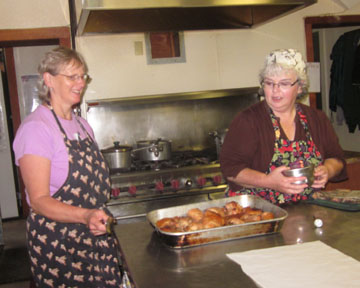
Annie Diemand (left) and Doreen Stevens in the Diemand Farm Kitchen
Diemand Farm Honey Ginger Chicken
Ingredients:
1/2 cup grated fresh ginger (watch your knuckles as you grate!)
1/4 cup finely chopped garlic
1/2 cup soy sauce
1/4 cup water
1 cup native honey (Doreen Stevens uses Warm Colors Apiary’s Deerfield Wildflower flavor)
5 to 6 pounds Diemand Farm fresh chicken pieces
chopped herbs as needed for garnish (parsley, chives, and a little thyme)
Instructions:
Place the ginger, garlic, soy sauce, water, and honey in a small saucepan. Heat the mixture just enough to melt the honey and combine all the ingredients. Cool the liquid briefly; then put it in a bowl with the chicken pieces. Marinate the chicken in this liquid in the refrigerator for 3 to 4 hours, or overnight if possible.
Preheat the oven to 350 degrees. Place the chicken, skin-side down, in a large roasting pan. Pour the marinade over it, and cover the pan with foil. Bake the chicken for 3/4 hour.
Remove the foil, turn the chicken over, re-cover the pan with foil, and roast for another 3/4 hour. Remove the foil, and put the pan back in the oven. Brown the chicken for 10 to 15 minutes.
Remove the chicken to a platter, and cover it to keep it warm. Strain the pan drippings through a fine sieve into a saucepan. Cook over medium heat until the drippings are reduced in half to make a sauce. (When I tried the dish I didn’t bother reducing the sauce, and it had plenty of flavor!)
Pour half of the sauce over the chicken and serve the rest on the side.
Sprinkle the chopped herbs over the chicken just before serving. At Diemand Farm this dish is usually served with barley (boiled and tossed with butter and herbs) or brown rice. Buttered noodles would work well, too.
Serves 6 to 8 farmers. (Diemand Farm portions are large!)
